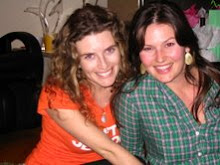This is definitely a post you'll want to forward, bookmark, print and hang on the fridge, because today, we're offering tips on ALL-NATURAL, HOMEMADE ways to clean everything from stains, drains and furniture. Nothing to purchase, all the ingedients you have in your own house.

Sandra's Green Summer Cleaning Tips: Part Deux
If you’re interested in going back to basics and removing toxic and harmful ingredients from your home once and for good take a look at the recipes below and get to scrubbing. You’ll be surprised to find that you probably have most of these ingredients/items in your home so in addition to saving the Earth you'll be saving up for that new YSL bag as well (or Nintendo Wii). Also, I've stopped buying paper towels and instead have been using sponges and old towels instead.
PS: For those of you with the pitter patter of little feet around your pad, human or canine, using a these all natural cleansers are more important than ever to assure that your loved ones are safe and not ingesting toxic ingredients when they play with toys that have been laying around, lick their paws, suck their toes…you get the point.
All Purpose Cleaner (409)
- Mix equal parts salt with vinegar.Use a moisten spong to scrub solution on effected areas. Be careful using this on items that may scratch easily. OR...
- Mix 4 tablespoons baking soda with 1-quart warm water in a spray bottle. Spritz directly on dirty surface and wipe with a sponge.
Toilet Bowl Cleaner
- Mix 4 tablespoons baking soda with vinegar. Pur into toilet bowl and let sit. Scrub with toilet bowl brush. OR...
- Sprinkle baking soda inside the bowl as you would any scouring powder. Add a couple drops of soap in also. Scrub with a toilet bowl brush and finish outside surfaces with a rag sprinkled with baking soda.
Tub & Tile Cleaner
- Mix a 50-50 solution of water and vinegar in a spray water bottle. Spray directly onto tub or tile. Wipe off with sponge. OR...
- Rub baking soda on surface directly with a damp sponge. Rinse with water.
Drain cleaner
- Mix 1 cup of salt with one cup of baking soda and ½ cup vinegar. Pour down the drain. Then pour down a teakettle full of boiling water. OR...
- Pour 1/2 cup of baking soda down the drain first, then 1/2-cup vinegar. Let fizz for a few minutes. Then pour down a teakettle full of boiling water.
- Fill spray bottle Water with 1 tablespoon lemon juice. Spray directly onto surface. Wipe with newspaper. OR...
- Put 1/4 cup of white vinegar into a spray bottle and fill to the top with water. Spray directly onto surface. Wipe with newspaper.
Blood Stain Remover
- Make a paste with cornstarch & water. Place on stain. Scrub.
Brass Polish
- Mix lemon juice with baking soda and dip a rag into the solution. Gently rub brass with moistened rag. OR...
- Mix salt with vinegar. Dip rag into solution. Gently rub brass with moistened rag.Or
Furniture Polish
- Mix ½ cup lemon juice with 1 cup olive oil. Dampen rag with solution and polish.
Copper polish
- Mix 1 tablespoon vinegar and 1 tablespoon salt and apply to the surface with a rag. Rinse thoroughly afterwards to avoid corrosion.
- Add 1 teaspoon salt and 1 teaspoon baking soda to an aluminum-foil-lined pan of boiling water. Dip silver in solution. Rub clean.
- To clean the plate of a clothing iron, sprinkle salt on plain paper and run a hot, dry iron over it.
Wood Floor Cleaner
- Mix oil and vinegar in equal parts. Dampen rag with solution and apply to wood.
Linoleum floor cleaner
- Add 1/2 cup vinegar to a bucket (pail) of warm water. (Don't worry, the vinegar odor will go away shortly after the floor dries!)
Oven Cleaner
- Mix 1 cup of baking soda with enough water to make a paste. Apply to oven surfaces and let stand a little while. Use a scouring pad to scrub.
Clothing Stain Remover
- Soak fabrics in water mixed with any of the following ingredients: borax, lemon juice, hydrogen peroxide, washing soda, or white vinegar.
Cutting Board and Chopping Blocks (you don't want to chemicals on the board and then in your food...)
- To sanitize, rub a cut lemon on them.
- To remove stains, rub in the juice from 1 lemon and let it stand 20 minutes. Rinse



